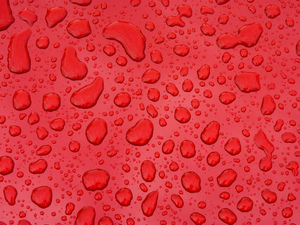A buffer is one of the best ways to wax a car to a showroom finish. The buffer leaves a professional appearance for a fraction of the cost of detailing, and the evenly-applied wax keeps your car’s paint protected from harsh conditions. But not everyone knows how to use a buffer to wax a car. Be careful! Orbital waxers are great tools, but in the hands of the inexperienced, they can leave paint burns, whorls, and crevice stuffing! If you don’t feel confident with the automated process of using a commercial buffer to wax a car, consider hand waxing. Here are the steps to wax a car with a professional buffer:
1. Choose your wax: Select a wax specially formulated to be gentle on car paint. Some contain abrasives, so be extra careful when selecting one of these for use on a lacquer finish, highly detailed, or dark car. I recommend a non abrasive formula that is fade resistant and environmentally safe.
2. Wash your car: Use wax remover and a nice, gentle soap made specifically for automobiles, and be sure to rinse it thoroughly. If your car is heavily soiled, you may opt to take the car to a spray-style coin operated carwash and clean it thoroughly using a high-pressure hose. Do not take your car through an automated car wash, because some of them add conditioners or silicone-based soaps that might not react well to the car wax you choose. Before it air dries, wipe it dry with a clean towel or chamois. Pay special attention to crevices and areas where ornamental pieces are attached. Then, use a special masking tape to cover rubber trim, body seams, and body creases. Using a buffer on those areas can result in paint damage.
3. Choose a temperate day and park your car out of the sun. It is preferable that you choose a carport to avoid bird droppings as you wax. If you work in the sun, you could end up with streaking from the sun baking your wax before you get the car finished. Don’t wax in extremely cold temperatures either, as the cold will solidify your wax before you can get it spread.
4. Using a palm-sized, one inch wide sponge that is barely moistened, dip out about a teaspoon sized lump of wax and rub it onto the car in a circular motion. Don’t get it in seams or around your insignias. Some prefer to apply the wax directly to the car in a quick squirt. Work in a very small area to start.
5. Put the wax applicator in place over the buffer pad. Use the buffer without turning it on to spread the wax around. Turn on the buffer and gently smooth in the wax without applying pressure or mechanically rubbing the car with the buffer by pushing it. Just guide the buffer and let it do the work. Always work in the lines of the vehicle, paying special attention to the way the metal flows.
6. Let the wax dry to a hazy look all over. Then take off the wax applicator. Put the wax removal cloth insert on the buffer pad. Using long strokes, remove the wax. Never go in circles or push the buffing pad. Only guide it. That can not be emphasized enough.
This should give you a detailed shine without damaging the paint. If at all possible, consider having someone show you how to wax a car with a buffer prior to using one yourself. The best rule of thumb is to never push down on the buffer and let it do the work. Good luck!





